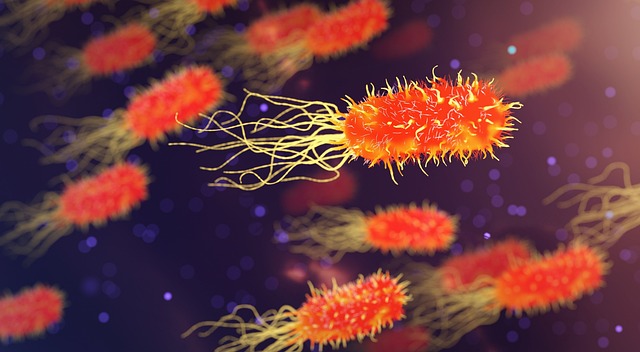Introduction
Diarrhoea is a common issue in children that can cause concern for parents and caregivers. Understanding the causes, recognizing the symptoms, and knowing how to manage diarrhoea can help ensure your child’s health and recovery.

Table of Contents
1. Understanding Diarrhoea in Children
1.1. What is Diarrhoea?
Diarrhoea is characterized by frequent, loose, or watery stools. It can lead to dehydration if not managed properly, especially in young children.
1.2. Normal vs. Diarrhoea
– Frequency: While children may normally have one or two bowel movements per day, diarrhoea is marked by a sudden increase in frequency.
– Consistency: Normal stools are typically soft and formed, whereas diarrhoea involves stools that are loose or watery.
2. Causes of Diarrhoea in Children
2.1. Infections
- Viral Infections: Rotavirus and norovirus are common causes of diarrhoea in children.
- Bacterial Infections: Bacteria like Escherichia coli (E. coli) and Salmonella can also cause diarrhoea.
- Parasitic Infections: Parasites such as Giardia can lead to prolonged diarrhoea.
2.2. Food-Related Causes
- Food Intolerances: Intolerance to foods like lactose can trigger diarrhoea.
- Food Poisoning: Consuming contaminated food or water can result in diarrhoea.
2.3. Antibiotic Use
- Medication Side Effects: Antibiotics can disrupt the balance of good bacteria in the gut, leading to diarrhoea.


2.4. Other Causes
- Teething: Some children may experience mild diarrhoea during teething, although this is not always the case.
- Stress and Anxiety: Emotional stress can sometimes cause digestive disturbances, including diarrhoea.
3. Symptoms of Diarrhoea in Children
3.1. Frequent, Loose Stools
– Increase in Bowel Movements: Diarrhoea is usually marked by an increase in the frequency of bowel movements, often more than three times a day.
– Watery Stools: Stools are often loose or watery, lacking normal consistency.
3.2. Abdominal Pain and Cramping
- Discomfort: Children may experience pain or cramping in the abdomen, which can vary in intensity.
3.3. Dehydration Signs
– Dry Mouth: A dry mouth, less frequent urination, and lack of tears when crying are signs of dehydration.
– Lethargy: The child may appear tired, weak, or unusually sleepy.
3.4. Fever and Vomiting
- Associated Symptoms: Diarrhoea may be accompanied by fever and vomiting, especially if caused by an infection.


4. Managing Diarrhoea in Children
4.1. Hydration is Key
– Oral Rehydration Solutions (ORS): Use ORS to replace lost fluids and electrolytes. These solutions are available over the counter and are specially formulated for children.
– Breastfeeding: Continue breastfeeding if the child is still nursing, as breast milk provides hydration and nutrients.
– Clear Fluids: Offer clear fluids like water, broth, and diluted fruit juices to keep the child hydrated.
4.2. Diet Adjustments
– BRAT Diet: The BRAT diet (Bananas, Rice, Applesauce, Toast) is often recommended during diarrhoea as it is gentle on the stomach.
– Avoid Dairy and Fatty Foods: These can aggravate diarrhoea and should be avoided until the child recovers.
4.3. Monitor for Dehydration
– Check for Signs: Watch for signs of dehydration like dry skin, sunken eyes, and decreased urination. Seek medical attention if these occur.
– Encourage Small, Frequent Sips: Instead of large quantities, offer small, frequent sips of fluids to help the child stay hydrated.
4.4. When to See a Doctor
– Persistent Diarrhoea: If diarrhoea lasts more than 24 hours, especially in young children, consult a healthcare provider.
– Severe Symptoms: Seek medical advice if the child experiences severe abdominal pain, high fever, or blood in the stool.



5. Preventing Diarrhoea in Children
5.1. Practice Good Hygiene
– Handwashing: Encourage regular handwashing, especially before meals and after using the bathroom.
– Clean Drinking Water: Ensure that the child drinks clean, filtered, or boiled water to prevent infections.
5.2. Safe Food Practices
– Proper Food Storage: Store food properly to avoid contamination.
– Thorough Cooking: Cook meat and eggs thoroughly to kill harmful bacteria.
5.3. Vaccination
- Rotavirus Vaccine: Ensure your child is vaccinated against rotavirus, a common cause of diarrhoea in young children.
Conclusion
Diarrhoea in children can be distressing, but with proper care and management, most cases resolve without complications. If you have concerns about your child’s health or need expert advice, contact our healthcare professionals at Health Authentica. We’re here to provide the support and guidance you need to keep your child healthy and safe.










